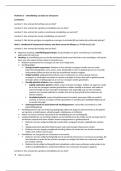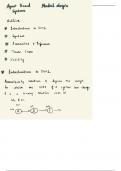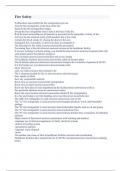Class notes
Immunology
- Course
- MICR360 (MICR360)
- Institution
- Queen’s University (QU )
Covers all lecture content & all topics in micro/immunology including: -Innate & adaptive immunity -Cells & organs -Antigens -Innate immunity receptors -Cytokines -Immunoglobulins structure and function -Immunoglobulin genes -B-cell generation -Complement -The Major Histocompatibility C...
[Show more]






